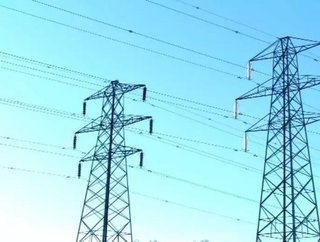Europe and US head in Opposite Electricity Directions

Europe and the US are headed in opposite directions in regards to electricity pricing, as renewable energy subsidies, fossil fuel prices and taxation impact upon residential power prices across the two regions, according to analysis released by research and consulting firm GlobalData.
According to the firm, the difference between residential retail electricity prices across countries was "dramatic", with German residential consumers paying more than 2.5 times their American counterparts in 2012.
Jonathan Lane, GlobalData's Head of Consulting for Power and Utilities, explains why domestic energy consumers in the US have the best deal by far: “Consumption taxation across most goods in the US is relatively limited and electricity is no different, with very few states applying a sales tax. The major renewable support scheme in the US, the production tax credit (PTC), is financed by the tax system rather than recovered through electricity pricing, so there are very few extra charges for consumers to pay. The wholesale price in the US is even better news for consumers, as high hydro production and low gas prices stemming from the shale-gas glut feed through to lower wholesale electricity prices.
“In contrast, Germany suffers from some of the highest residential electricity prices in the world due to the high cost of subsidising significant solar and wind generation via the Erneuerbare-Energien-Gesetz (EEG) and 19% VAT, though German consumers are able to sustain these costs through high GDP per capita. However, German wholesale electricity costs are actually rather low, reflecting low coal and carbon costs.
“Italy suffers from similarly high residential electricity prices, but these are driven by high wholesale costs, as high gas prices are set by long-term, oil-indexed import contracts, which hold great weight in a country which relies heavily on gas-fired energy generation. Italian residential consumers also pick up a significant bill for solar subsidies. Italy’s Ministry of Economic Development calculates that its wholesale gas prices are 20% higher than in Northern Europe, and the country is seeking reform of the wholesale gas market to bring prices in line with neighbouring countries."
Lane also says that residential electricity consumers in Spain should be paying rates similar to those found in Italy, or even Germany, if the full costs of renewable subsidies, wholesale electricity and taxes were included. “Instead,” Lane says, “the government has decided over several years to keep prices in the regulated electricity market low. Spain’s so called 'tariff deficit' represents the cumulative cost of what has been charged to customers and what should have been charged in a liberalised market. This process of effectively subsidising Spanish electricity prices left the tariff deficit at €24 billion at the end of 2011. The government is planning to reduce the deficit via a 6% tax levied on all generation (including renewables) and a 'green cent' tax on coal, fuel oil and natural gas.”
In contrast to the Spanish government’s efforts to keep regulated electricity prices down, residential prices for electricity consumers in Ireland are being driven up by the wholesale price in the Single Electricity Market (SEM), which operates as a mandatory pool across both the Republic and Northern Ireland. Irish electricity prices are heavily influenced by wholesale gas prices and the Euro-Pound exchange rate, as 90% of gas is imported from the UK, and the depreciation of the Euro against the Pound played a big part in the 13% increase in Irish wholesale gas prices during 2011-2012. However, Irish residents do not face significant bills for renewable subsidies, and the reduced VAT rate on electricity of 13.5% enjoyed by Irish consumers, compared to the standard rate of 23%, helps to mitigate higher wholesale costs.
British domestic electricity consumers enjoy relatively low electricity prices due to an even lower VAT rate of 5%. “However,” argues Lane, “consumers pick up other charges such as the Renewables Obligation, the Energy Company Obligation (an energy efficiency scheme), and small scale renewable feed-in tariff schemes. Wholesale electricity prices in Great Britain are slightly higher than found in many European markets, due to the high share of gas in the generation mix and the higher costs associated with the UK’s BWR nuclear fleet compared to PWR fleets in Europe.”
Source: GlobalData
Read More in Energy Digital's February Issue






